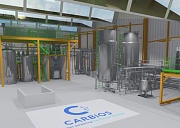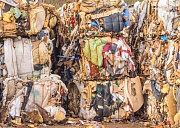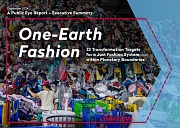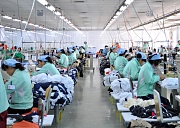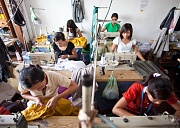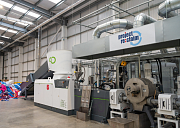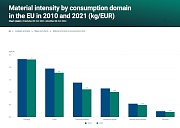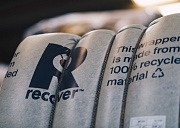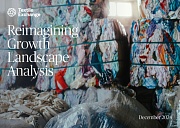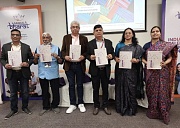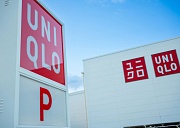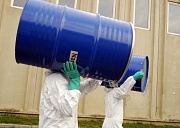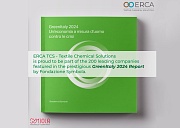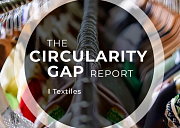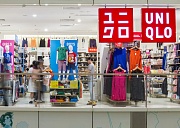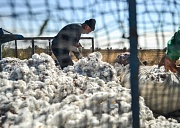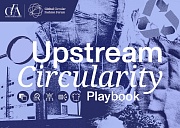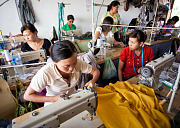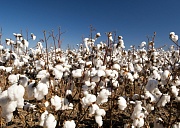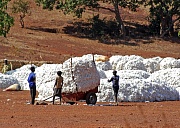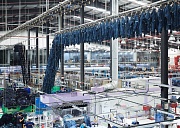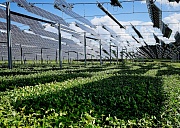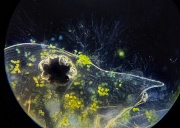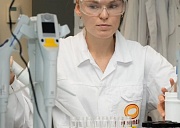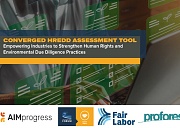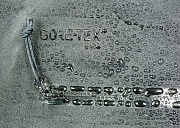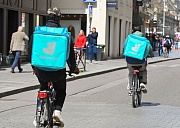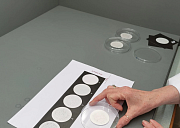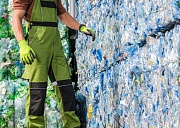The Sustainable Apparel Coalition has launched a new transparency roadmap, which will allow members to roll out previously confidential Higg Index scores to the general public. The move comes as the SAC membership pushes for greater transparency on Higg, in a bid for the tool to become the harmonised textile industry standard of choice for social and environmental improvement. John Mowbray reports.
So far the Sustainable Apparel Coalition has remained relatively quiet about its future plans for releasing Higg Index scores for public consumption, which has prompted concerns that its members have been slow to collect information – or are not keen on releasing data that can be held up to further scrutiny.
But Jason Kibbey, CEO of the Sustainable Apparel Coalition, hopes these fears will now recede after an explicit decision was taken at last month’s annual SAC meeting in Copenhagen to rubber-stamp a new roadmap for the transparent release of all Higg data. The roadmap shows the first tranche of Higg facilities data will be released by mid-2018 and other data, from the brand tool and then the product tool, will be released afterwards, with 2020 seen as a final cut-off date for full public release of the Higg Index.
“We are committing to launch the Environmental and Social Modules for facilities in 2018, so that companies can release their own FEM (Facilities environmental module) scores and FSLM (Facilities Social Labour Module) scores,” Kibbey told Ecotextile News. “Before this happens, we need to do two things as part of the new roadmap – that is the next revision of Higg and also the verification steps. But we are firmly committed to that timeline and there will be a full data release by mid-2018.”
Data from the Facilities tool will be the first to be released since the SAC has more data on this part of Higg than the other two areas: the Brand tool slated for release in 2019 and the much more tricky Product tool, which will bring up the rear in 2020.
 So what exactly will this look like? Kibbey says there is still room for experimentation in order to get it right. “It’s likely there will be some on-product information about scores, but facility data could be available in other ways. Perhaps some sort of interactive on-line map similar to the recently released sourcing map launched by Marks & Spencer.”
So what exactly will this look like? Kibbey says there is still room for experimentation in order to get it right. “It’s likely there will be some on-product information about scores, but facility data could be available in other ways. Perhaps some sort of interactive on-line map similar to the recently released sourcing map launched by Marks & Spencer.”
Until recently there was some trepidation about the release of Higg facilities data because there was no consistent way for it to be used by member companies, or the 6,000 facilities that have so far uploaded modules to the central Higg database.
Communication tool kit
Essentially, for each of the different assessments a ‘communication tool kit’ will be designed that will describe – and to some extent dictate – exactly how the released Higg scores will be used so that information is released in a consistent way. “We are in a position to provide a standardised, comparable way for the Higg scores to be used in public so data can all be used and interpreted in the same way,” said Kibbey.
But will be there a requirement to release all information ‘good and bad’? “We’re focusing on this in our guidelines,” he said, “An is why we are having governance around those guidelines so people do not just cherry pick the best and give a false impression of just one per cent of their supply chain. This will become part of the guidelines for use of the data.”
Module update
The facilities module is where SAC has amassed the largest amount of submitted data and also has the highest degree of compatibility, so it’s no real surprise this tool will be first to market. “We have had 13,000 modules uploaded since Higg first started, that’s no small number,” he said. “In 2013 we had 405 modules posted; in 2014 we had 1,936 modules posted; up to May 2015 we have had 10,826 modules posted to Higg. If you look at this on a graph it’s a big uptick.”
Of course, Kibbey would like to see more activity from brands and suppliers; and acknowledges that most of the information has been supplied from a core group within the SAC membership which now represents over 170 companies. “You’re right, not everyone [SAC members] has used Higg,” he said. “But most of those who’ve been SAC members for a reasonable time have some sort of pilot testing going on. I do see a range of use. Some have used Higg only a handful of times and others have had several thousand interactions. But what you are also seeing, as we are getting more facilities on the system, are companies connecting without having to roll out the Higg.
“For example, because 6,000 supplier facilities have engaged, and many brands and retailers share suppliers, these factories are helping to facilitate connections. We have almost 38,000 of these connections so far. So even though we have brands who have not yet rolled out Higg, they are still connecting with their supply chain who are already using Higg.”
Brand and product tools
The newly agreed SAC roadmap confirms that data from the brand and product tool will be released in 2019 and 2020, respectively. This is partly because of a lower uptake of the brand modules and also the difficult and complex nature of developing a tool that can accurately score the environmental and social impact of a product.

Kibbey explains: “Although we have started to see a much bigger uptake of the brand module in the last few months, we’re still working on verification, so it will change a little bit before we can do a full assurance. But we are definitely looking at a 2019 date for launch of the brand module and its data.”
Finally, the SAC roadmap shows the last piece of the Higg jigsaw will be the release of the product assessment data. “Our members wanted a lot more changes to our Design and Development Module (DDM) beta before its release ... so that will be coming out in September. Making foot-printing information on product will take some time as we have seen from the Product Environmental Footprint (PEF) module, so that release will be in 2020,” he confirmed.
The development of an accurate and transparent product module will clearly represent the biggest challenge for Sustainable Apparel Coalition and its members. Yet Kibbey is still confident the SAC can deliver this information to the public within the newly published timelines.
“We can definitely commit to this timeline based on our current resource levels,” he noted, “However, if a member brand or a partner government wants to resource us so that staffing levels are higher, then we are confident we can even accelerate this timeline.”
The allusion to the potential involvement of a government body is interesting and State backing for the Higg Index would clearly be a big boost to its roll out to consumers – at least regionally.
Perhaps another way for the SAC to ensure Higg has the biggest global impact on the social and environmental buying decisions of consumers would be to become less reliant on a core group of stakeholders to supply data, and to have some way of flagging up – directly or indirectly – which members are still sitting on the sidelines.
Now that would be transparency in action.















